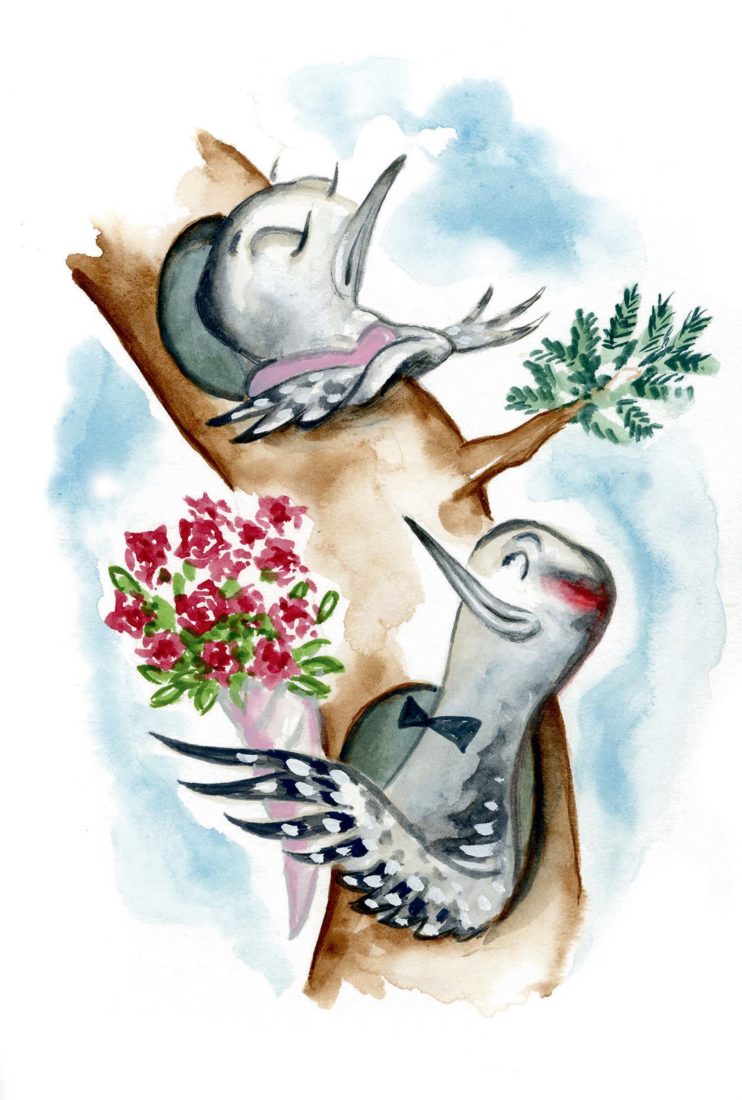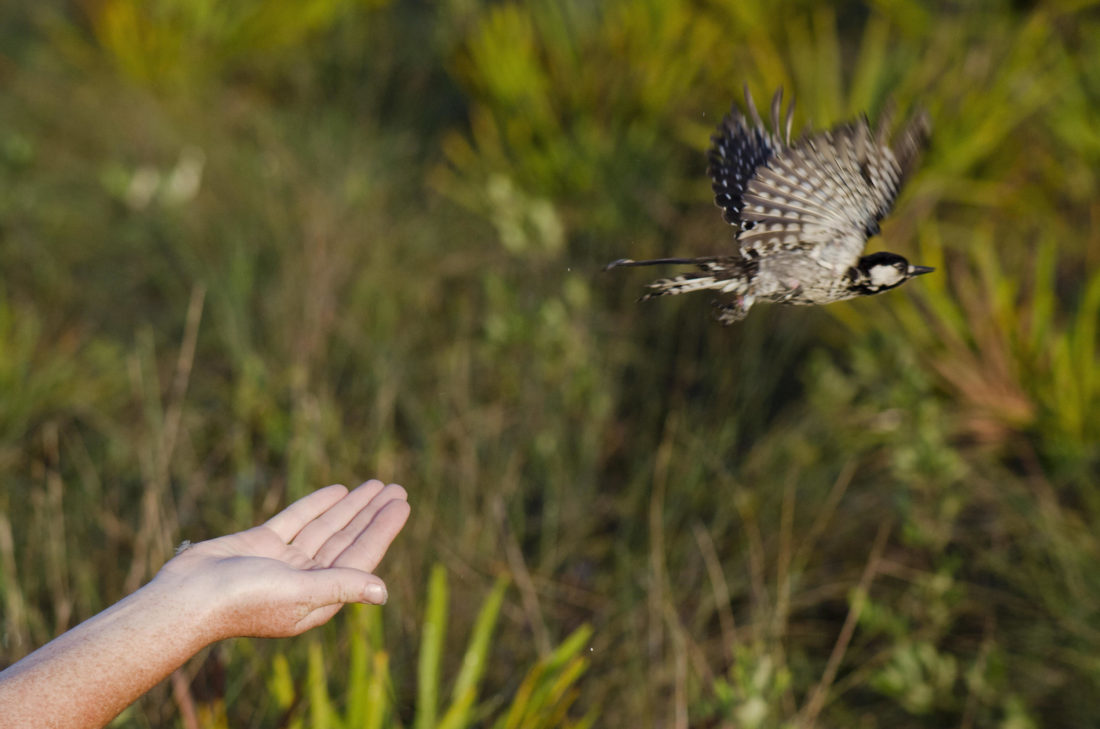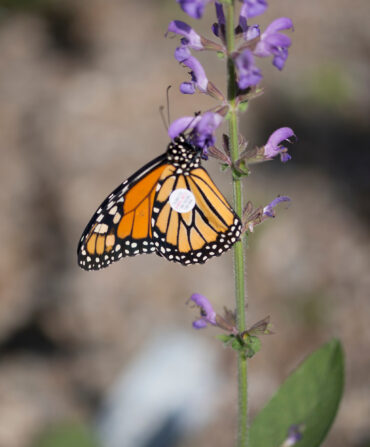When it’s time to nest, the red-cockaded woodpecker gets a little picky. “They need live pine trees that are old and infected with red heart fungus to make excavating easier,” says Chuck Martin, the director of the Nature Conservancy’s Moody Forest Preserve in southeastern Georgia. The endangered woodpecker, also known as
the Yankee Doodle bird for the tiny strip of red on the males’ heads, is native to Southeastern longleaf pine forests, which are fast disappearing.

Recently, it has received a boost from relocation programs: Biologists take young birds from healthy populations and release them into pine habitat with ready-made love shacks—cavities in younger trees that save the birds the one-to-three-year process of pecking out a nest. “We just always hope the released birds will hit it off,” Martin says; if a pair does, the birds mate for life, and the male will start sprucing up his house in April by flaking off pine bark until the sap runs (scientists believe this is to ward off climbing snakes).

Happy home intact, by May baby woodpeckers—which look like tiny dinosaurs when they hatch, says Martin—will occupy the cavities until they grow their handsome black-and-white feathers and take wing. To spot red-cockaded woodpeckers in Georgia this spring, keep your eyes peeled for peeping heads in high pine trees on Tavia’s Trail at Moody Forest, at the Piedmont National Wildlife Refuge in Hillsboro, and near the Florida border in Okefenokee National Wildlife Refuge.








